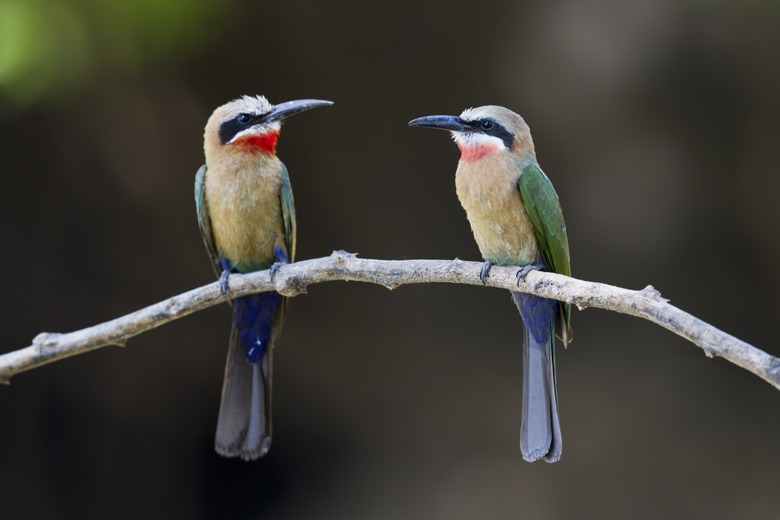How Do Birds Reproduce?
While numerous characteristics set them apart from other creatures commonly kept as pets — they fly, they lay eggs, they have feathers — birds are distinctive in various reproduction-related ways as well. For instance, bird reproduction is unique. The females have only one gonad, some birds mate for life and some even participate interspecies mating.
Reproductive Anatomy and Physiology of Bird Reproduction
Reproductive Anatomy and Physiology of Bird Reproduction
While male birds possess two testicles, the female birds of most species have only one ovary. Bird reproduction occurs only during the spring and summer, when food is most plentiful, and as this period approaches, the size of the testicles and ovarian follicles both increase. Most males do not have a "penis" and instead have a cloaca (an opening where sperm exits).
In male of all bird breeds, this occurs under the influence of testosterone, which has other familiar effects, such as muscle hypertrophy, an increase in aggressive behavior, and a decrease in the fat stores birds require in the fall to prepare for long migratory flights. As in humans, testosterone stimulates the development of secondary sexual characteristics, such as plumage and singing, which in turn give females clues about the mating fitness of individual males.
Read more about how to differentiate male and female sparrows.
The Courtship of Various Bird Breeds
The Courtship of Various Bird Breeds
Ornithologists — scientists who study birds — have observed that mating is often driven by the males, with their garish coloration, ostentatious displays of their feathers, and tendency to initiate sexual contact. This is because, in most bird species, the female makes the final decision to reject or accept a male that courts her, and often does this on the basis of being "impressed" by signs of fitness such as brightly colored feathers.
Though not the norm, in some bird breeds, the female actually has brighter plumage and assumes the lead courtship role. This is related to the fact that males are responsible for protecting and incubating the eggs, and raising the young, in these species. In other words, when the roles are reversed in terms of care of offspring, with males doing most of the work raising the offspring, the roles in courtship tend to reverse, too– with the brightly colored females competing for the males.
How to tell a male from a female mocking bird.
The Act of Mating
The Act of Mating
In most species, the act of copulation itself begins with something called a cloacal kiss, wherein the male clambers atop the female's back and twists his tail under hers. Most species — some waterfowl are an exception — do not possess a penis-like organ that is inserted into the female, so insemination occurs via the non-invasive cloacal kiss. About 1 or 2 percent of sperm released by the male reach the sperm-storage tubules of the female, which lie near the junction of her vagina and her uterus. Those sperm that do reach this area swarm over the surface of the ovum there, and fertilization then occurs.
Interspecies Mating
Interspecies Mating
Unlike most animals, some birds — about 10 percent of the 10,000 or so species identified as of 2013 — participate in interspecies mating, according to Irby J. Lovette, director of the Fuller Evolutionary Biology Program at the Cornell Lab of Ornithology, in a 2013 New York Times article. A prime example is breeding between the black ducks and mallard ducks found in much of the eastern United States. Because many of the hybrids born of interspecies unions die young or are otherwise incapable of passing on their genes themselves, this process is not considered to be evolutionarily successful.
Cite This Article
MLA
Crystal, Mike. "How Do Birds Reproduce?" sciencing.com, https://www.sciencing.com/do-birds-reproduce-4565646/. 30 July 2019.
APA
Crystal, Mike. (2019, July 30). How Do Birds Reproduce?. sciencing.com. Retrieved from https://www.sciencing.com/do-birds-reproduce-4565646/
Chicago
Crystal, Mike. How Do Birds Reproduce? last modified March 24, 2022. https://www.sciencing.com/do-birds-reproduce-4565646/
